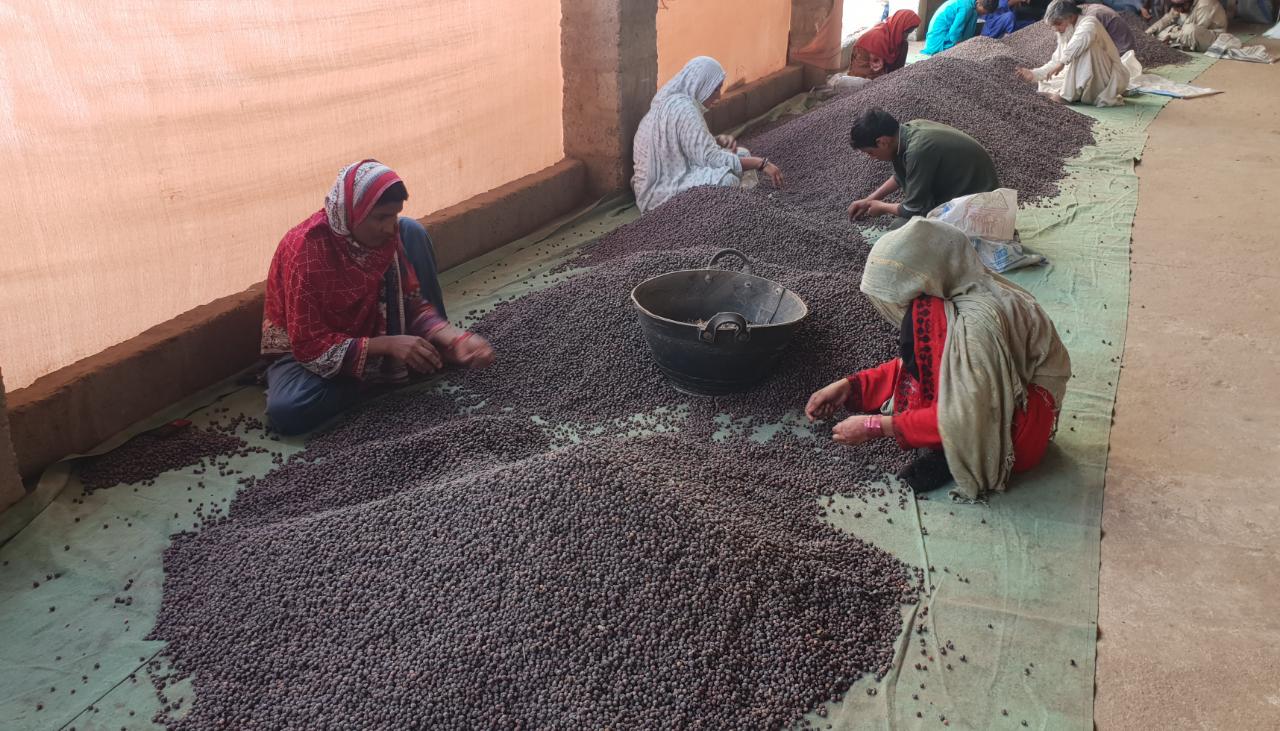When Jill Mulvaney began working with Himalayan juniper (Juniperis recurva) she was so struck by how different the flavour was from the classic J. communis that she had to find out why.
I met Saad at a Botanica conference in the UK several years ago now. He told me about his business Moonstar Admani Farms in the Indus Valley in Pakistan—a herb and flower farm supplying medicinal herbs and fresh flowers for the ritual industry. Saad had samples of his dried rose petals (Rosa centifolia) and Himalayan Juniper berries (Juniperus recurva).
Most of the juniper available in NZ is J. communis (mostly sourced from Macedonia) which meant I hadn’t yet had the chance to work with many different varieties. I loved the idea of having another type of juniper available to work with, so I decided to import Saad’s J. recuvra in bulk and stock it in our Aromatic Botanicals range. I began to sample and distil this new species, and found Himalayan and Macedonian juniper to be markedly different in taste and aroma (see our Encyclopedia Botanica for the full comparison). So I set out to find out why.
Yes, they are different species—there are actually around 45 different species of juniper, some of which are even poisonous, so it seems an obvious answer. But both have been used aromatically for centuries (and for similar purposes) so that didn’t satisfy my curiosity. I wanted to take a look inside, find out about it’s aromatic composition and get more clues on how I should work with this botanical.
Finding out more
The best way to find out about what’s in an aromatic product is to get a GCMS analyais. This measures and identifies the volatile compounds it contains—mostly terpenes that give aroma and flavour, but also other polyphenols. We’d need a sample of both essential oils to send to my colleague Benoit at PhytoChemia, so we set up two distillations and got to work.
We measured out 1kg of Macedonian and 1kg of Himalayan juniper and crushed them a bit (not powdered, but enough to break them up—like coarsely ground peppercorns). Using a 10L copper column still, we steam distilled each juniper for the same time and at the same temperature.
Yields
The first surprise was that while the Macedonian juniper yielded 7ml of EO/litre the Himalayan gave 20ml/litre, which is a whopping yield. This explains why the aroma profile of Himalayan is so punchy, and why when you use them in a high ratio in a gin blend it tends to louch and make a big, fat, dry and piney gin.
From experience it’s too much on it’s own, which is why my preferred ratio in a blend is a ⅓ of the juniper load. So if I was using 14g (in total) of juniper I’d use 5g of Himalayan and 9 grams of Macedonian. It seems to work well for me, but it’s worth experimenting—which is why I find small gin stills useful (you’ll find much more info in our Gin Immersion course).
The results
Here’s a summary of the results for the Macedonian, and the Himalayan (note that it’s not the full report, instead it outlines the main components of the EOs). You’ll see many of the same compounds but in (sometimes) quite differing proportions—most notably Myrcene, which is present in a much higher proportion in Himalayan juniper. Also, the three compounds α-Pinene, Myrcene and Limonene together make up a whopping 85% of the total compounds in Himalayan juniper, while the top three Macedonian components (α-Pinene, Myrcene and Sabinene) only come to just over 50% of the total—Macedonian has many more smaller contributors.
Along with the results from the GCMS analysis came the second surprise. Alexis (the chemist) made the comment ‘Jill, are you aware that the Himalayan shares many of the same terpenes that are present in cannabis?’
No, I wasn’t but we will be developing a topical application that may be helpful for sore achy muscles and also an EO blend that may help with sleepless nights and stress. We will ask for some testers to trial it—watch this space.





